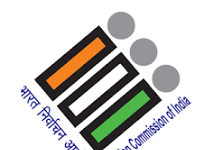
Kerala has defied the national trend of declining Covid-19 infections in recent weeks. The size of the outbreak in the southern state, however, is concerning. The state had 165,011 active cases as of Saturday night, accounting for 40% of all active cases in the country. In the last week, India has reported an average of 40,459 new Covid-19 infections per day. Kerala has been responsible for approximately 19,528 new cases per day, or about 48% of the national total. Only once before has a state been responsible for a larger share of the national infection count: Maharashtra, at the start of India’s brutal second wave, for a month and a half. Kerala currently has a weekly positivity rate of 12.3 percent, more than five times the national average of 2.4 percent during the same time period. There is no denying that the state is currently the country’s most virus-infested region. Kerala, on the other hand, has handled the outbreak far better than what isolated infection numbers suggest right now. This is why.
1) Kerala residents least exposed to virus
The Union health ministry released state-by-state data on Wednesday from its most recent round of seroprevalence surveys, which took place between the last week of June and the first week of July. Kerala had the lowest proportion of people exposed to Sars-CoV-2 in India, with 44.4 percent detected seropositivity. 67.6 percent was the national average. This, of course, includes vaccination’s contribution. This reveals two things to us. First, people in Kerala were the least exposed to the virus in the country at the end of the second wave (when the ICMR’s serosurvey was conducted). Kerala, as a result of these findings, had the highest proportion of people still susceptible to the disease (55.6 percent, compared to a national average of 32.4 percent) of any state in the country. Second, the findings provide insight into how well states conducted their testing. When the results of the ICMR’s serosurvey are compared to the total number of infections reported until the first week of July (when the survey ended), it becomes clear that Kerala was by far the best state at identifying on-the-ground infections. Until July 7, the state reported a little more than 3 million infections out of a total of 15.6 million people who had been exposed to the virus (if the findings are extrapolated to the entire population of the state). Kerala was able to identify around 19 percent of all people exposed to the virus in the state, which paints a picture of the state’s testing strategy. To put these figures in context, the national average for this detection rate is around 3%.
2) The state was not hit as badly during the peak of India’s second wave
During the peak of the country’s second wave, the health-care system in the vast majority of the country’s populous regions was severely overburdened. A massive nationwide shortage of medical oxygen dominated headlines for three to four weeks in May. As of May 27, 2021, there had been at least 619 deaths reported across India due to a lack of oxygen, according to a database maintained by Datameet, a citizen’s data collective based in Bengaluru that compiled such fatalities based on local news reports. Goa had the highest number of deaths due to a lack of oxygen, with 83 deaths, followed by Andhra Pradesh and Madhya Pradesh, both with 65 deaths. Kerala had none of the 619 deaths reported across the country.
3) Kerala has fared better in saving lives
The state also has the best Covid-19 mortality rate of any major state in the country, at 0.5 percent, which is significantly lower than the national average of 1.3 percent. This isn’t surprising, given that Kerala is the country’s best-performing state in terms of health care, according to the NITI Aayog’s Health Index, 2020, which assesses states and UTs on a variety of indicators including health outcomes, governance, and processes.
4) Better vaccination coverage than most
According to data from the health ministry’s CoWIN dashboard, India’s vaccination drive has covered 27.9% of the country’s adult population on average with a single dose of the vaccine, while another 10.9 percent has been fully vaccinated as of 9 p.m. on Sunday. This figure is much higher in Kerala, where 30.7 percent of adults have been partially vaccinated and 22.8 percent of the state’s eligible population has received both doses. Indeed, a look at the country’s best vaccine dose administration by population demonstrates how far ahead the state is in terms of dose administration to its population. Kerala is the third most populous state in India, with 55 doses administered per 100 people.









